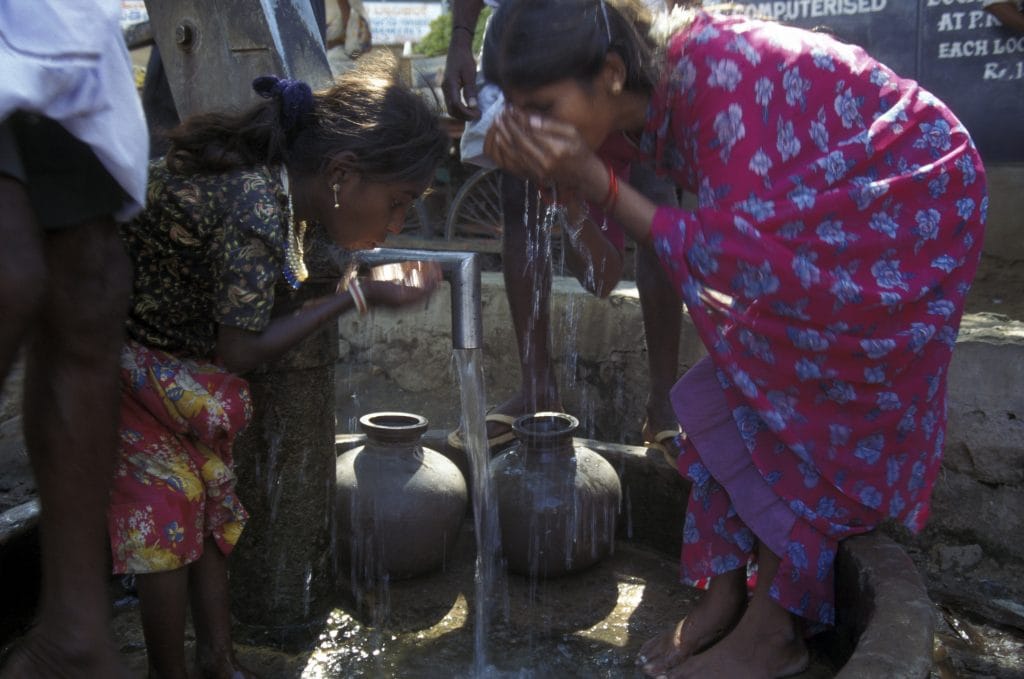
A coalescence of climate change, consumerism, population growth and pollution means the world is staring at a water crisis. For India, however, the situation is worse. The worst water crisis in its history is already underway.
This is according to the latest report by global NGO WaterAid about the state of the world’s water. It contains dire implications for India.
More people live with water scarcity for at least one part of the year in India than anywhere else in the world. According to the report, the figure for India is one billion, representing the overwhelming majority of India’s population. Simply put, one billion Indians live with lack of water for at least one part of the year.

“The change is occurring because of numerous factors…changing consumer trends; the escalating effects of climate change; pollution rendering drinking water unsafe for human consumption; and population growth increasing demand while stretching supplies”
Globally, the report contains some alarming warnings. Four billion people live in water-scarce areas. Approximately 844 million people live without immediate access to clean water. Yet this crisis of water scarcity isn’t slowing down our water consumption. In fact, water consumption today is six times what it was a century ago. WaterAid estimates a one percent rise in water consumption every year.
The change is occurring because of numerous factors. Among them are changing consumer trends; the escalating effects of climate change; pollution rendering drinking water unsafe for human consumption; and population growth increasing demand whilst stretching supplies.

“Household by household, 75 percent of homes in India do not have drinking water on the premises…[and] seventy percent of drinking water is contaminated”
India is shouldering a significant burden of the world’s water crisis. Household by household, 75 percent of homes in India do not have drinking water on the premises, (although 88 percent of households have access to clean water nearby). However, this is mitigated by the fact that seventy percent of drinking water in India is contaminated.
The report emphasises the role of industry in deteriorating India’s water reserves – including the exporting of water itself.
The widespread use of water in industry means India is the world’s largest user of groundwater. The country accounts for 24 percent of the total worldwide. This has led to a significant reduction in India’s groundwater reserves, which is a primary source of fresh water. Between 2000 and 2010, groundwater reserves in the country depleted by 22 percent.

“Despite the unsustainability of India’s groundwater extraction, it continues to be a major exporter of groundwater to other parts oft he world”
The level of groundwater extraction in India is unsustainable, as the report highlights with the example of the upper reaches of the basin of the River Ganga. According to WaterAid, fifty times more groundwater is extracted from the aquifers belying the Upper Ganga than what is naturally returned to it through precipitation and snowmelt.
Despite the unsustainability of India’s groundwater extraction, it continues to be a major exporter of groundwater to other parts of the world. Globally, India accounts for twelve percent of groundwater exports.
Countries such as the United Kingdom, meanwhile, spare the use of 55 billion cubic metres by importing groundwater from countries such as India. This represents one third of what the UK would have to use otherwise.

“With unsustainable patterns of water use across many industries, it is easy to see why the ‘Day Zero’ analysts predicted for South African capital Cape Town may be drawing nigh for India. Indeed, recent years have included regular portents of the magnitude warned of by WaterAid”
Meanwhile, water use in many industries in India is copious – particularly when it comes to agriculture. For example, India is a major producer of wheat and rice. These industries carry a global average water footprint of 1,827 litres and 2,500 litres of water per kilogram respectively according to WaterAid.
In the 2017-18 period, India produced 99.7 million metric tonnes (99.7 billion kilograms) of wheat – a record output – and 112.9 million metric tonnes (112.9 billion kilograms) of rice. For the 2018-19 period, India’s agricultural ministry has set even higher targets for wheat and rice output, at 100 million and 113 million metric tonnes respectively.
With unsustainable patterns of water use across many industries, it is easy to see why the ‘Day Zero’ analysts predicted for South African capital Cape Town may be drawing nigh for India. Indeed, recent years have included regular portents of a water crisis of the magnitude warned of by WaterAid.
A UNESCO report last year warned of severe water shortages facing India by 2050 – noting that at the time that nineteen percent of the world’s population lacking access to clean water already live in India. Contamination of groundwater reserves by pollution and depletion of supplies were blamed as the culprits in that report. The importance of water conservation was highlighted regularly, both in the press and by policymakers, including the Prime Minister.
The findings of WaterAid’s report only add more urgency to UNESCO’s warnings, placing the onus on India to move to counteract its water crisis before it swells further to even greater proportions than what the country is witnessing at present. India has much to lose from the environmental crises at its door. With great swathes of the country’s population already witnessing the well running dry, it is high time that action is taken.
“Beneath the Surface: The State of the World’s Water 2019” by WaterAid can be accessed here.

